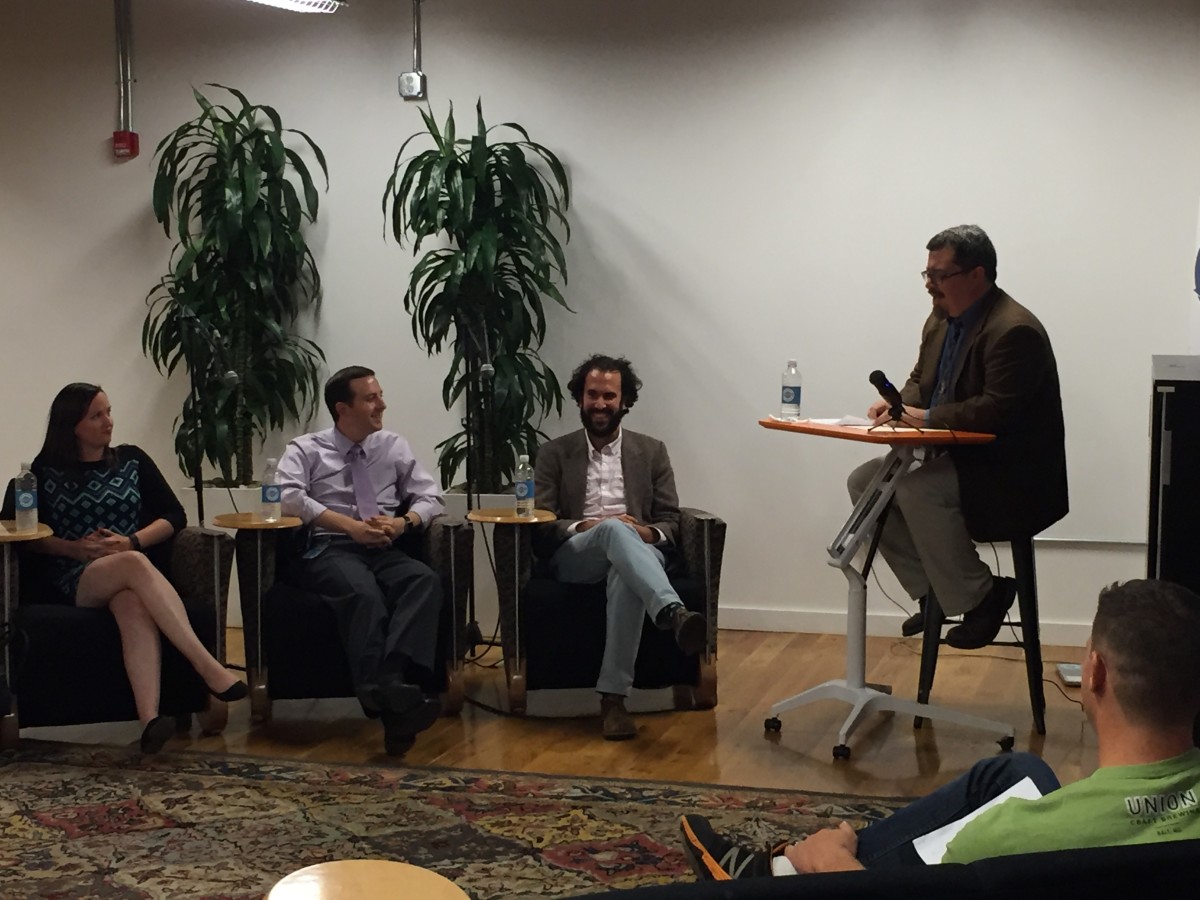When she was a teacher, Allovue founder Jess Gartner found Twitter to be one of her most powerful tools. She used it to connect with other teachers, and, on her best day, it became a critical tool to show students what was happening during the protests in Egypt and other Middle Eastern countries.
But to get access to Twitter in schools, she had to break a few rules.
“I had to do some crazy black-ops stuff to get around those firewalls, but it was the best, to watch that in real-time,” Gartner said.
That’s part of the still-uneasy relationship between teaching and technology that was explored at a Baltimore Innovation Week edition of Quizzical Conversations, a panel discussion presented by NewsUp.
Joe La Bella, a special education teacher at Paul Laurence Dunbar High School, said he sees a way for technology to play a role in the classroom.
There's 400,000 obnoxious paper-pushing processes in school districts that could probably benefit tremendously from a technological update, but instead we have 483 homework trackers in the app store.
“I think technology can help provide that remedial, rote learning work,” he said referring to instruction that involves repetition.
But he said that school policies don’t allow students to have cellphones.
“It’s challenging because students have tools that are supposed to open up all kinds of worlds for them, but they have to keep it in their backpack,” he said.
In the classroom, leaving technology out of the lesson plan puts students at a disadvantage when computer skills are basically required to get a job.
“There is a moment in time to really examine, when the economy is changing so rapidly, what is it that we really need to convey in a public-school education to allow somebody to be productive,” said state Sen. Bill Ferguson (D-Baltimore City), a former teacher who often works on tech and education issues.
When technology is used in education, panelists said there is still work to do to determine what the best use is.
“I think when technology is most valuable, it saves humans time from doing things that humans are bad at, and reallocates time for things humans are good at,” Gartner said.
With Allovue, Gartner makes a tool to help administrators make financial decisions. She said it’s an “esoteric” realm of edtech that resulted in some new jargon: edfintech.
“There’s 400,000 obnoxious paper-pushing processes in school districts that could probably benefit tremendously from a technological update, but instead we have 483 homework trackers in the app store. (It’s probably ten times that),” she said.
In the classroom, edtech is often still used to teach students in the same they have always been taught, Gartner said.
“It comes down to trusting teachers and to trusting kids. They’re going to be out there in the world one way or another,” she said.
The talk of introducing more technology also inevitably brought up questions of funding, but Ferguson said increasing equity could provide resources in lieu of new money, given that Maryland as a whole is already a very rich state.
“I do not believe that Baltimore City will be able to solve its own problems as Baltimore City, because concentrated generational poverty that has been created by policies — either intentional or unintentional — make the needs so great that there will be nearly impossibly to change it at scale,” Ferguson said. “The only real solution is to think more as a region, and to find ways to better socioeconomically integrate schools.”







